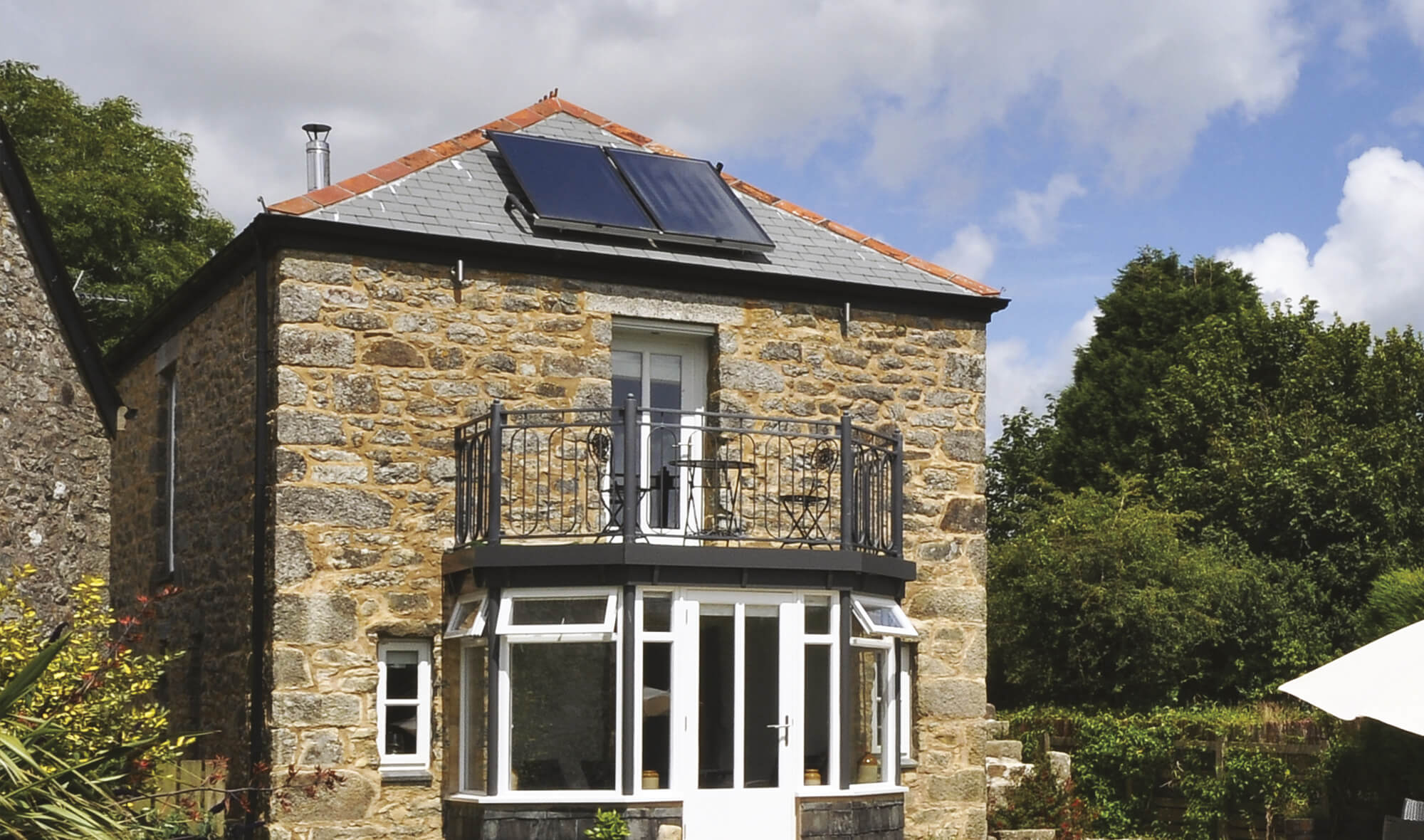Solar thermal systems are instinctively attractive to those looking to create a more sustainable home with lower bills.
This is simple, low tech that enables you to use heat from the sun to do what would otherwise take fossil fuels to achieve – and some panels are manufactured right here in the UK.
A well-designed and operated solar thermal array can provide up to 50% of a household’s domestic hot water. Get it wrong, however, and your panels could be just an expensive bit of eco-bling. This article explores the critical factors that will enable you to maximise solar thermal yield.
How solar thermal systems work
Before we get into the technicalities, let’s summarise how the setup works (skip this bit if you’re fully up to speed).
Solar water heaters collect energy from the sun (and daylight) and use this to raise the temperature of the water we consume for washing and bathing. Much of the energy required to heat water is used to take it from cold to lukewarm temperature. This means that, even on days with dull weather, the panels can still do some work.
The total amount of hot water provided by solar thermal panels is known as the solar fraction. A secondary source of heat (usually a fossil fuel boiler) will be required to do the work during the winter and as backup at all other times.
The key components that make up a solar water heater are the collectors, a twin-coil cylinder and a controller.
The vast majority of these systems are indirect. This means the liquid that circulates throughout the collectors is held in a sealed loop, and the warmth is transferred to the hot water cylinder by means of a heat exchanger (a coil).

This barn conversion features solar hot water panels
In this kind of setup, the vessel uses two sources of heat – the solar coil and the boiler coil – hence it is known as a twin-coil cylinder. Cold mains water enters at the bottom of the
unit, is warmed by the sun and then exits at the top in order to feed your baths, showers and basins.
As heat rises, the lower section of the cylinder is normally cooler than the top. The solar coil is therefore located at the base where the water is coolest, to make the best use of whatever solar resource is available.
Eligible installations can access quarterly cashback payments for seven years via the Renewable Heat Incentive (RHI), which currently pays out 20.66 pence per kWh of energy generated.
Can you use solar for space heating?
Solar thermal panels aren’t often used this way. In summer when the solar resource is good, the demand for space heating is minimal. By the time winter comes, the solar resource available is lousy – so it’s not a good match.
However, in the shoulder months of autumn and spring, there are occasions when the collectors could make a valid contribution. This needs a different setup, with the solar loop feeding a thermal store that has multiple heat inputs and can provide both domestic hot water and space heating.
Bear in mind this would disqualify the installation from receiving RHI payments – even though it’s an efficient use of spare solar resource.
How can I combine solar thermal with other renewables?
There are a number of renewable options for supplying domestic hot water, but if you’re aiming for a reduced carbon footprint then there’s one that stands out in particular – namely using solar thermal panels alongside a woodburning stove with an integral back boiler, as part of a stored hot water setup.
Biomass boilers running on pellet or chip-based fuels could do exactly the same job as the stove in this scenario, and are less effort to fire up for a short period in summer if you need to heat the cylinder.
Read more: How to Combine Renewable Energy Sources
Making the most of your solar thermal panels
For any self builder or renovator, value for money is a major consideration. Here are the key factors to bear in mind to ensure you get the most of your solar hot water system.
Panel orientation
Ideally, the thermal collectors should be mounted facing south (any orientation south-east to south-west will still work).
The best angle in the UK is around 35° to the horizontal. This is consistent with many of our pitched roofs, although collectors can be installed on flat roofs or even on the ground with a suitable mounting bracket.
The post How to Maximise Savings with Solar Thermal Panels appeared first on Build It.
Article reference How to Maximise Savings with Solar Thermal Panels
No comments:
Post a Comment